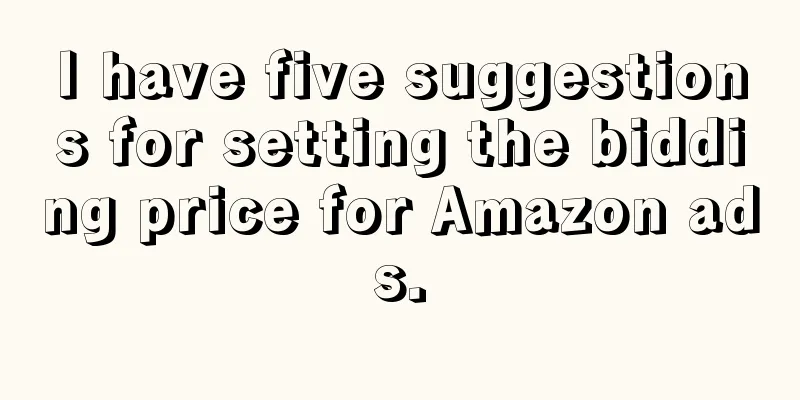A student asked: When setting up Amazon in-site advertising, how should the bidding for the advertisement be set?
Regarding this, my suggestion is that you can consider the five prices comprehensively and set them up according to your own advertising budget. The five prices are as follows:
First, the system recommends a default bid
The reference system recommends that the default bid fluctuate up and down. But the sad thing is that I believe many sellers have observed that for most products in most categories, the system's recommended default bid is 0.75. Sellers with more than two years of operating experience should have the impression that in the early days, the system's recommended advertising bids were 0.03 and 0.05. From 0.05 to 0.75, almost all sellers' advertising bids have unconsciously increased, advertising expenditures have also increased, and the advertising input-output ratio has begun to decline, while Amazon's advertising revenue has increased significantly. This is a typical manifestation of the psychological anchoring effect. But anyway, there are still many sellers (especially new sellers) who will set their bids based on the price of 0.75, so when you set your ad bid, you have to take this price into consideration.
Second, the system bidding suggestion range
Compared with the nonsensical 0.75 recommended by the system, next to the default bid, the system also gives a recommended bidding range, and this recommended bidding range is often closer to reality than the default bid. It can also be quite different for different products and different keywords. Therefore, sellers can also refer to the system recommended bidding range as a reference when setting the bid.
Third, considering the input-output ratio, use one-tenth of the gross profit as the reference value for advertising bidding.
For most products, the conversion rate can be over 10%. Taking this as a reference, if the advertising bid is set to one-tenth of the gross profit, if the order conversion rate can reach over 10%, the advertising itself can be profitable, which is naturally the result we expect. Therefore, a price of one-tenth of the gross profit can also be used as a reference bid when setting up advertisements.
Fourth, refer to the recommended bidding range of core keywords in manual advertising to set the bidding of automatic advertising
When you set up a manual ad, the system will give different recommended bidding ranges for different keywords. If you can refer to the bidding range of core keywords to set the bidding for automatic ads, it can also be a more effective reference.
Fifth, if you have experience in operating similar products, you may wish to refer to your previous experience to set up
If you have experience in operating and advertising similar products, you may wish to set up bids for new ads based on your previous experience. Although the experience may differ in the new situation, your real experience will make your operation easier.
However, all of the above bidding suggestions are only bidding suggestions when we first create an advertising plan. Once your advertising plan starts running, we need to adjust the advertising bids based on the actual operating conditions during the operation process. For example, if the exposure is small, you can increase the bid after confirming that the Listing optimization is OK. If the exposure is high, the conversion is good, and the CPC price is low, then you may try to lower the bid for the ad, etc.
Regardless of the initial bid setting, sellers should remember that the core of advertising is not the delivery, but the targeted optimization and adjustment based on advertising data during the operation of the advertisement.

